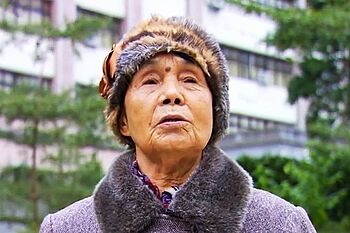For nearly four decades, people in Taiwan were not allowed to speak publicly about the persecution under martial law. Sketches like these in the former “Villa Oasis” prison were often the only documents testifying to the actions of the secret police. Their archives were only recently made partially accessible. Only the victims’ reports can tell us what really happened behind the gates of the camps and in the prisons.
Credit: Hubertus Knabe
“I will never forgive them”

The gymnast Chang Chang-Mei was 18 years old when she was arrested in her school in Taichung in April 1950. She was accused of belonging to an “insurgent organization.” She was not released until July 1962 – after spending twelve years and 100 days in incarceration. The Human Rights Museum accompanied Chang Chang-Mei to the sites of her persecution and documented her fate in an oral history documentary. In it she describes her imprisonment and the sounds of torture she heard at night.
Click here for the documentary video about Chang Chang-Mei (Chinese with English subtitles).
Link
Eyewitness videos from the National Human Rights Museum
After the Dictatorship. Instruments of Transitional Justice in Former Authoritarian Systems – An International Comparison
A project at the Department of Modern History at the University of Würzburg
Twitter: @afterdictatorship
Instagram: After the dictatorship
With financial support from the German Federal Ministry for Economic Cooperation and Development
“I had no idea what my crime was”

Chang Ta-Pang was arrested in Tainan, Taiwan on August 16, 1950, two days after his 21st birthday. The secret police accused him of supporting a seditionist organization. In March 1951, a court sentenced him to ten years in prison, which he served up to the very last day. In an oral history documentary from the National Human Rights Museum, he describes how he learned about his sentence.
Click here for the documentary video on Chang Ta-Pang (Chinese with English subtitles).